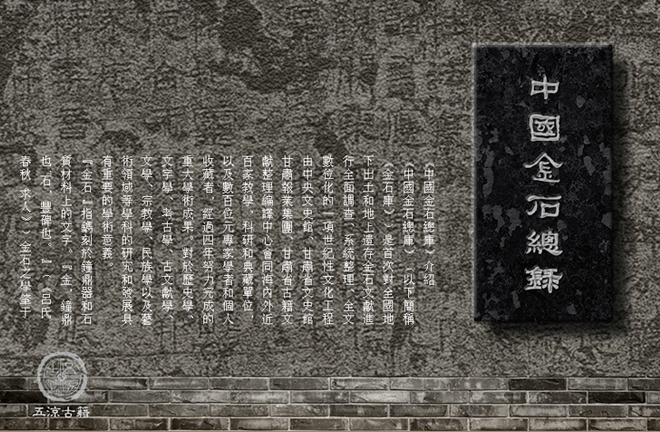First phase of inscription archive complete

The General Records of Chinese Bronze and Stone Inscript
After four years, scholars from the Gansu Provincial Center for Documentation and Compilation of Ancient Books and Literature have completed the first phase of full rubbing and full-text digitization of the General Records of Chinese Bronze and Stone Inscriptions. The achievement was announced at the first National Symposium on Digitization of Bronze and Stone Literature on Aug. 3 in Lanzhou, Gansu Province.
Massive excavations of inscriptions on stone tablets and metal objects from different dynasties have yielded a wealth of valuable resources for historical research. However, it has been difficult for scholars to utilize the materials because they are scattered and disorganized.
The digital collation by the center includes bronze inscriptions that date back to before the Qin and Han dynasties (221 BC-220 AD) and were unearthed prior to the 21st century as well as stone epigraphs of different dynasties, including important tablets of the Republican Period (1912-49), said Gao Guoxiang, head of the center.
Each square of inscribed bronze or stone comprises an intact rubbing, a full-text record and a description as well as video materials in some cases. There are roughly 400,000 in total. Record texts and descriptions amount to approximately 400 million characters.
The digitization project is the first of its kind in China, and it is expected to meet a great need in the field, said renowned archaeologist Su Bai.
Bronze and stone epigraphs are valuable resources of Chinese culture. Large in number and rich in content, they are comparable to the Siku Quanshu, the largest collection of books in Chinese history, Su said.
Discussing the academic value of the records and future compilation, participants in the symposium summed up three characteristics of the project.
First, the included inscriptions are broad in scope, numerous, and comprehensive in terms of content. Second, an effective classification system has been invented for it. Third, the project will facilitate the return of valuable rubbings and literature lost overseas.
The project is the first China has undertaken to carry out comprehensive investigation, systematic arrangement, full rubbing and full-text digitization of bronze and stone literature from around the country that has been excavated or otherwise preserved. Divided into 10 phases, the whole project is scheduled to take 10 years.
Zhu Yi is a reporter at the Chinese Social Sciences Today.

 PRINT
PRINT CLOSE
CLOSE